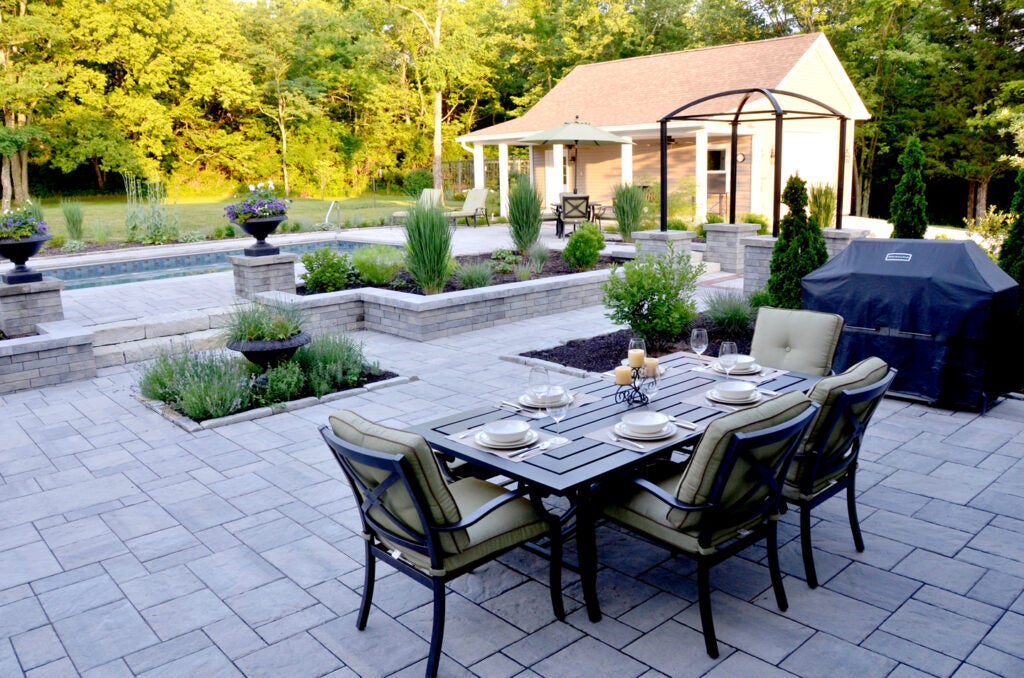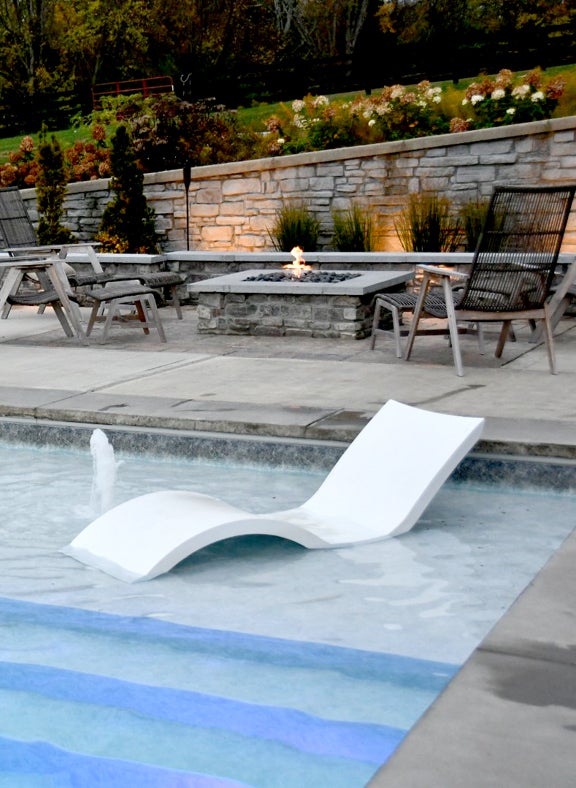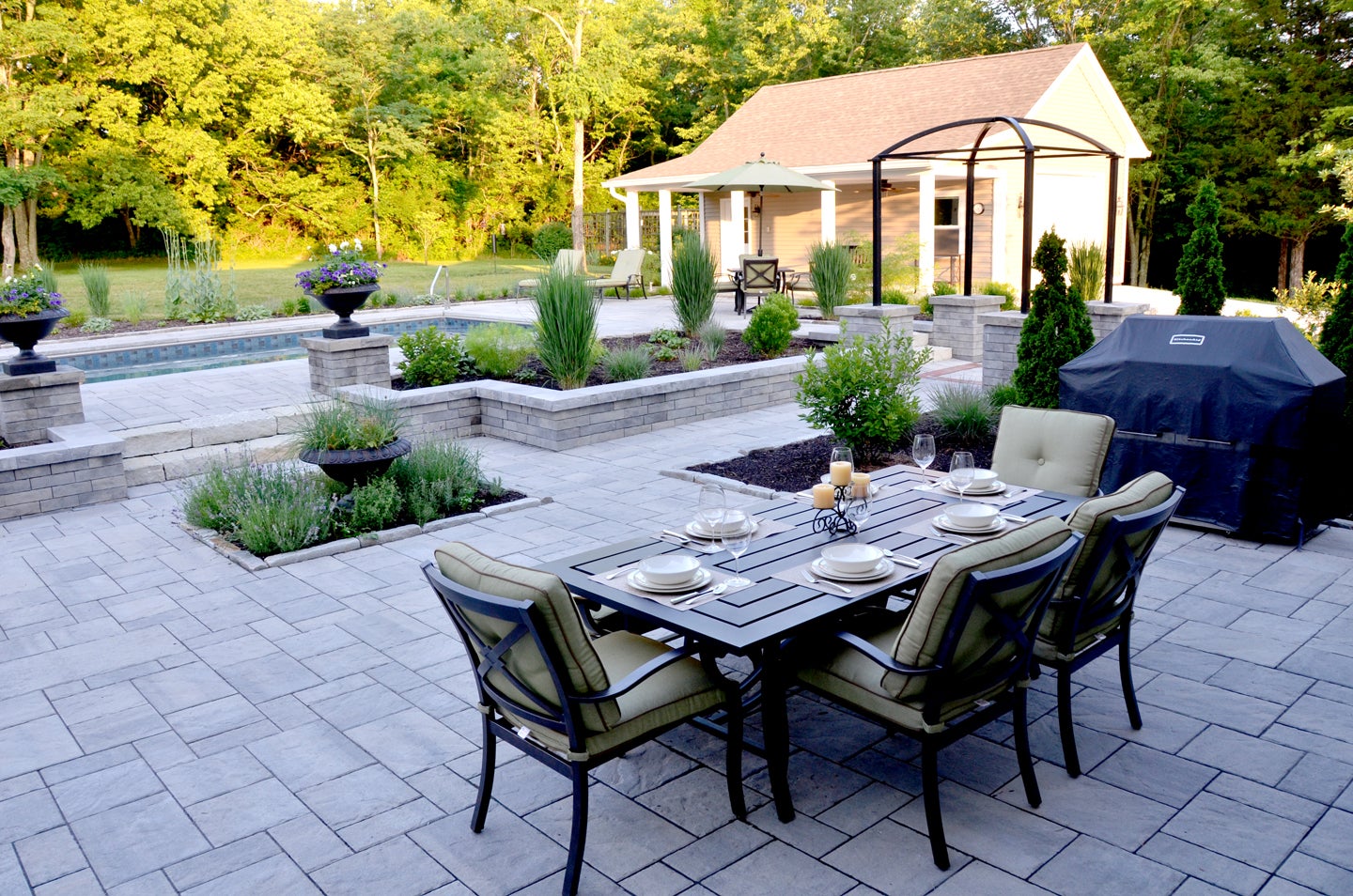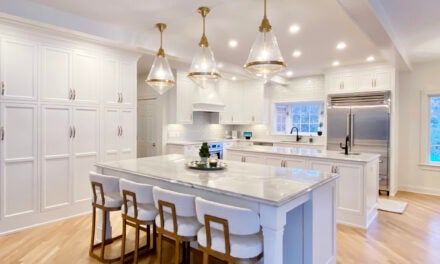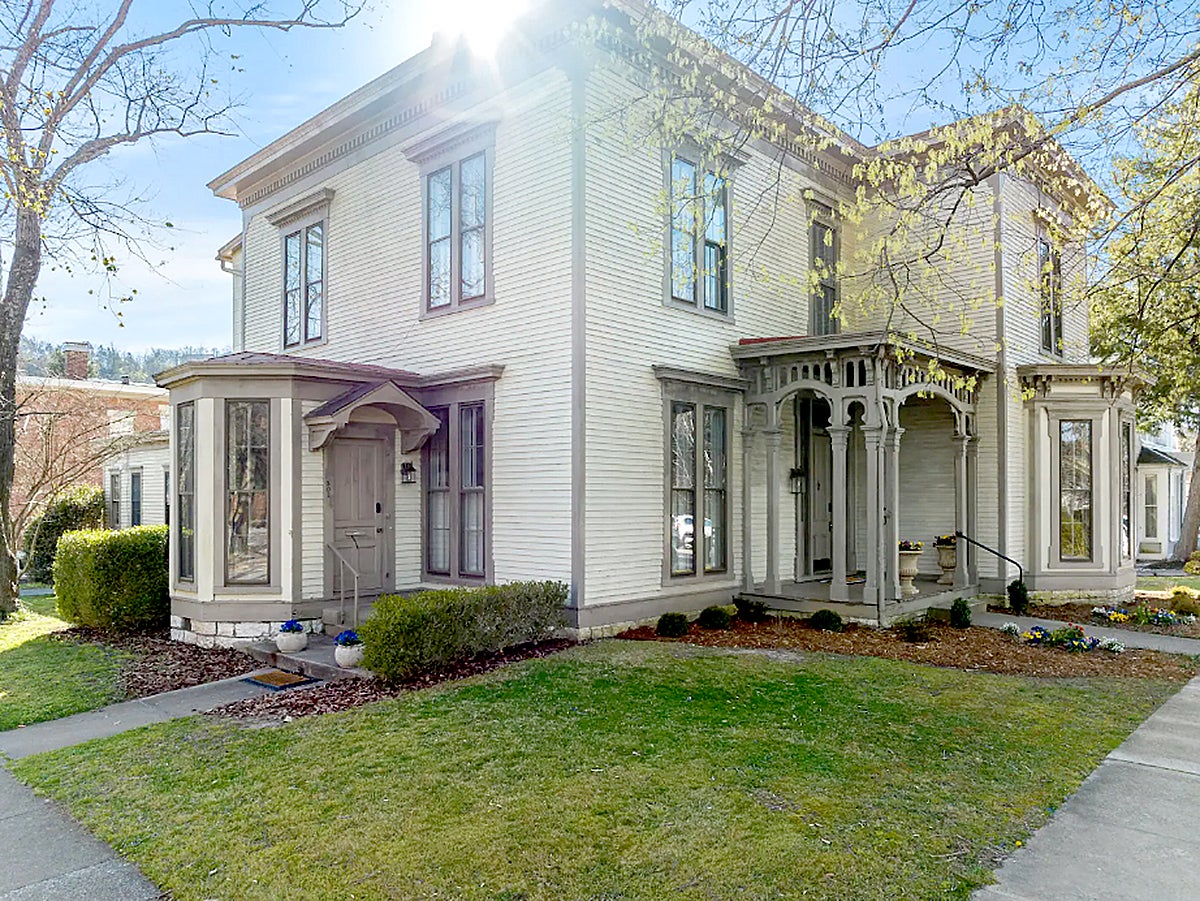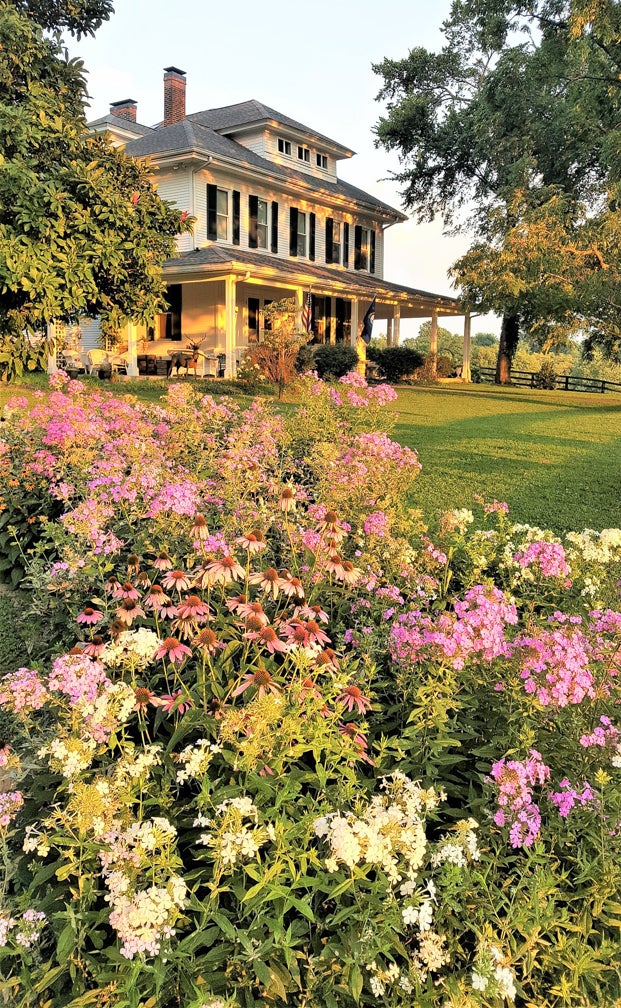And Becky Gatewood
“Design is not just what it looks like and feels like. Design is how it works.”
Steve Jobs
Would you ever consider allowing a concrete company to dictate the shape of your new home by pouring the footers without a plan? Of course not. Then why would you allow someone to create a pool without considering the shape and flow of your yard and overall use goals?
Many people don’t realize the importance of design when it comes to pool installation. Not only is it critical for the obvious such as privacy concerns, shape, equipment screening, drainage and more -— but forethought with design can also help you create the long-term oasis that you envision for such a substantial investment.
Landscaping is often treated as an afterthought because it is seen solely as cosmetic, therefore a large percentage of consumers do not consider contacting a landscape designer when planning a pool. In reality, landscape design is far from being only plants and stone. Qualified landscape designers have the knowledge necessary to plan for topography, HOA constraints, utility easements, setback requirements, and other potential issues.
In addition, many homeowners are told that a pool is impossible for their particular yard due to slope or drainage issues. Often, a landscape designer can address and solve these issues, making the seemingly impossible a reality. When you hire a landscape designer or design-build you are hiring a team of people to coordinate every aspect from site feasibility to mower access.
A landscape designer sees the larger picture of overall space, whereas a company focused on pools narrows in on their specific product. By hiring a company that only installs pools, or only pours concrete, you are making yourself responsible for the other aspects. In the long run, you likely will end up hiring additional contractors to finish outlying areas once the pool is installed. Why not create a cohesive design by working with the same designer for all elements from start to finish?
Considerations to take when planning a pool include overall design, placement and circulation patterns. Does the pool need to complement any architectural elements through its shape or orientation? How will it connect to other aspects in the space, such as your driveway, any sidewalks, paths or patios, and existing lawn areas? How big should the pool be and how much decking do you actually need? Should an outdoor kitchen or grill area be incorporated? Do you need a shade element like a pavilion? Some of these elements may also be affected by the necessity for a fence or barrier around the pool, which is required by Kentucky Building Code.
Let’s face it, pools are not just for swimming. They are elements that encourage entertaining, cooking, lounging, healing and general outdoor relaxation. These are aspects that are often beyond the scope of pool or concrete-only installation companies. If you plan to introduce additional components such as entertainment spaces, it is crucial to consider access for electrical, plumbing, and/or gas, as well as footers for future surfaces. If you are digging up your yard to install the pool, why not plan ahead to avoid more digging down the road?
Why be your own contractor for something as complicated as a pool? Your end goal is to create an element that will provide serenity to your outdoor living space — begin that process by letting someone qualified focus on all of the moving pieces of design and construction. The installation will be more efficient and less stressful, and the final result will be one that meets your needs, respects the existing site and creates an oasis — leaving you time to do the splashing!
